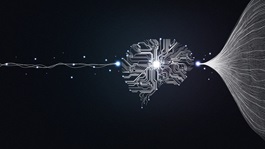On July 16, 2021, the federal government (through the Minister of Innovation, Science and Industry, and the Minister of Canadian Heritage) launched a public consultation on adapting Canada’s copyright framework to ongoing developments in artificial intelligence (AI) and the Internet of Things (IoT). The government is seeking submissions including on issues surrounding:
- an exception for text and data mining (TDM);
- authorship and ownership of works created by AI or created with the assistance of AI;
- infringement and liability surrounding both AI-generated works and infringement by AI or the development of AI; and
- repair and interoperability issues associated with technological protection measures (TPM).
Alongside the announcement, a consultation paper was published identifying some of the challenges to the copyright framework posed by these topics, some options and approaches being considered to address those challenges, and questions to guide stakeholder submissions. The government hopes to develop measures that will:
- support innovation and investment in AI and other emerging technologies;
- preserve the incentive to create new works and innovative products, including by ensuring rights holders are adequately remunerated; and
- support competition and consumer flexibility in the IoT space.
Canadians and stakeholders can submit comments by email to copyright-consultation-droitdauteur@canada.ca until September 17, 2021. We outline some of the key areas of focus for the government below.
AI-focused issues
Defining AI: The government is seeking input on an appropriate definition for AI for the purpose of copyright policymaking. There is a recognition that there are varying definitions of AI, including from the World Intellectual Property Organization (WIPO) and the Organization for Economic Co-Operation and Development (OECD). Further, the government recognizes a need for copyright policy to consider different types of AI.
Text and Data Mining (TDM): TDM refers to techniques for analyzing large amounts of machine-readable data to identify trends, patterns, and relationships and to make predictions. TDM can be used to train AI applications. The government recognizes the value of TDM in research, problem solving, and AI development. It also recognizes the potential for TDM to require reproductions of large quantities of copyrighted works which may be contrary to rights provided to authors under the Copyright Act (Act). Further, there may be logistical challenges in obtaining the necessary authorization from rights holders for all works used in TDM activity, which must also be balanced against enforcement and adequacy of remuneration for authors.
Sections 29 and 30.71 of the Act currently prescribe exceptions for fair dealing and for temporary reproductions for technological processes which might apply to some types of TDM activities. However, the government recognizes a lack of clarity in these current exceptions to infringement and is considering the possibility of introducing a targeted TDM exception to infringement in the Act. Submissions are requested to provide a better understanding of the nature of TDM activity and the scope and operation of a potential TDM-specific exception.
Authorship and ownership of AI-generated or AI-assisted works: The government is seeking comment on how the Act should treat works generated by AI or works created with AI. AI are increasingly developing the capacity to contribute to works or generate works of their own. Currently, copyright jurisprudence and the Act suggest that an author of a work must be a natural person. For example, the term of copyright is tied to the life and death of the author and includes moral rights. Copyright also requires the exercise of skill and judgment.
Three approaches are currently being considered: (1) attributing authorship of AI-generated works to the person who arranged for their creation (in line with the present framework in the UK); (2) limiting copyright and authorship only to human generated works (or works with at least some human input); and (3) creating a new framework specifically for AI-generated works (e.g., which may not include moral rights). The government is seeking comment on these three approaches but is also open to other possibilities.
Infringement and liability regarding AI: Development or use of AI may infringe copyright (e.g., by its training or operation). Unauthorized use of AI-generated works may also infringe copyright. This presents issues for proving liability for rights holders (including, for example, identifying persons responsible for the infringement and establishing access to the copyrighted work). The government is seeking comment on how the Act should be clarified with respect to infringement and liability issues of AI-generated and AI-assisted works, as well as infringement by AI applications.
IoT-focused issues
The main issues identified by the government in respect of IoT relate to the use of technological protection measures (TPMs) that control access to or use of copyrighted works (e.g., digital locks). Rights holders use TPMs to protect their copyrighted works from unauthorized use. The government is interested in understanding how TPMs affect: (1) the ability of consumers to repair devices with embedded software; and (2) the development of interoperable software.
Repair: The Act currently includes prohibitions on the circumvention of TPMs with specific exceptions. However, the government recognizes that the existing exceptions may not protect all circumstances in which someone may circumvent TPMs for repair purposes. The government is considering introducing a new TPM exception to facilitate repair and is considering two different avenues for the implementation of such an exception: (1) introducing a specific exception under the Act; and (2) creating regulatory exceptions under the Governor in Council’s regulation-making authority.
Interoperability: Interoperability of computer programs can facilitate interaction between applications and platforms and increase market entry (particularly by small-medium enterprises), competition, and incremental innovation (e.g., by software “add-ons” or apps), all of which benefit consumers. TPMs could potentially restrict innovation by preventing access to, or copying of, software on original equipment that is required to ensure interoperability (e.g., of improvements or “add-ons” that increase customization and usefulness of the equipment).
The Act already includes exceptions to both the prohibition on circumventing TPMs and to copyright infringement in relation to interoperability of computer programs. However, the government identified that these exceptions may not provide sufficient protection from liability and is seeking additional information on the challenges faced by stakeholders. The Canadian agricultural manufacturing industry was highlighted as one in which interoperability may be particularly impacted by TPMs.
The authors of this IP Monitor invite readers to contact them with any questions regarding the above subject matter.






